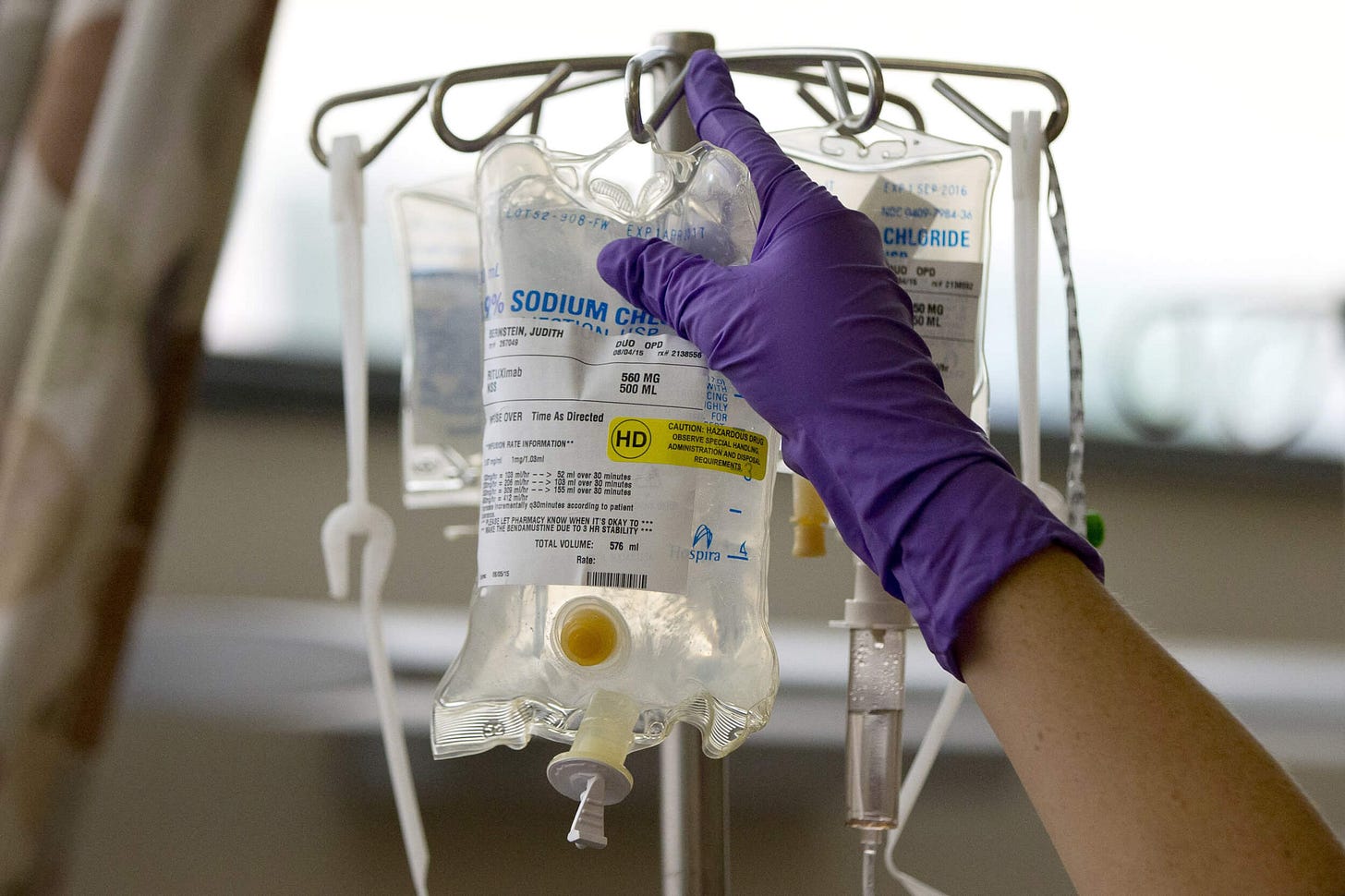Chemo for the Planet
The right way to think about the risks of climate repair
If cancer has touched your life, you know how hard chemotherapy can be. The side effects can be hellish, sometimes fatal. Healthy people don’t decide to take chemo for shits and giggles. It’s a risky treatment. As Dan Miller puts it, people take it because they conclude the alternative —letting cancer go untreated— is riskier.
All climate analogies are flawed, but this, I think, is useful. Climate repair techniques carry risks, but it makes little sense to think about those risks in isolation. You evaluate them in comparison with the risks of not using them.
This is the right way to think about the risks of climate repair.
If anything, comparing albedo-based climate intervention with chemotherapy is probably way too dramatic. Climate repair may be closer to insulin for diabetes management: a longterm treatment to help manage (but not cure) a chronic condition.
Are there risks? Of course! Stratospheric brightening risks changing general circulation patterns in the atmosphere in ways that could shift rain in ways we can predict only roughly. Marine cloud brightening could impact weather patterns far from the site of the intervention site, and affect marine ecosystems in ways that can’t be fully foreseen.
If the planet wasn’t warming, nobody would be considering these types of interventions.
But then, people who don’t have cancer don’t go around considering chemo, do they?
In reality, chemotherapy is much riskier to a human body than climate repair is to the climate. With chemo you’re literally poisoning your entire body for the sake of poisoning the relatively few cancer cells that are making you sick.
Climate repair is nothing like that extreme.
Marine cloud brightening would rely on sea salt which isn’t toxic at all. Stratospheric brightening uses sulfur, whose risks are relatively well understood and mild. Both are short-lived: if they’re found to be having undesirable effects you can just stop and return to the pre-intervention situation in a matter of weeks.
It’s always struck me as perverse that this last fact —the reversibility of albedo-based repair— is sometimes cited as a weakness of these techniques. People say once you start you can’t stop, else face a “termination shock.” That’s a bit like saying a diabetic on insulin can’t stop, or else he faces an insulin termination shock — well yes, quite, but that’s just a roundabout way of saying his treatment is working!
The more I think about it, the more I think the diabetes analogy is better than the cancer analogy: climate repair carries much milder risks for the planet than chemo carries for the human body, more in line with insulin therapy than chemo. Diabetics may not feel good about needing that daily insulin shot, but they do need it, often for life.
And insulin of course carries some risks: take too much at the wrong time and you can easily end up with hypoglycemia, which can be very dangerous indeed. And yet you don’t meet many diabetics who straight-up refuse to take insulin due to worries about hypoglycemia, in part because those diabetics end up dead.
Refusal to stick by a needed course of treatment is a sure sign of a patient in denial about the real risks they face. In the climate movement, however, we deal with a particularly contradictory type of patient, one who both continually screams at the top of his lungs about how dreadful sick he is and refuses to even talk about treatment. It’s…puzzling.



"In the climate movement, however, we deal with a particularly contradictory type of patient, one who both continually screams at the top of his lungs about how dreadful sick he is and refuses to even talk about treatment. It’s…puzzling."
Well... Puzzling to the extent that we expect logical consistency from people being paid in correlation with both how much they scream AND how much WORSE the condition gets. What's the quote, "It is remarkably difficult to teach a man something if his continued employment depends on his NOT learning it"?
But yes, for sake of effective public relations, perhaps don't deliberately compare your preferred solution to poisoning oneself with a multitude of toxic chemicals to try to kill living cells. It's... misleading.